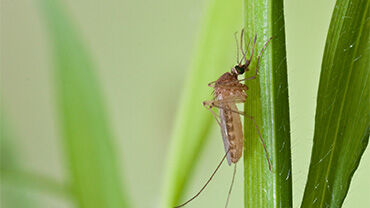Surveillance, prevention and control of West Nile virus and Usutu virus infections in the EU/EEA
This technical report describes the result of a project to provide an overview of the epidemiological situation of West Nile virus (WNV) and Usutu virus (USUV) in the EU/EEA including the diagnostic, surveillance, prevention and control practices applied in EU/EEA countries, and to assess the public health and animal health impact in the EU/EEA.
Executive summary
This technical report provides an overview of the epidemiological situation of West Nile virus (WNV) and Usutu virus (USUV) and describes the diagnostic, surveillance, prevention and control practices applied in EU/EEA countries. Both WNV and USUV are mosquito-borne flaviviruses that can cause disease in human and animal hosts and are endemic in several EU/EEA countries. This study applied the ‘One Health’ approach by involving experts from the public health, animal health and substances of human origin (SoHO) sectors. Information was collected in 2021 and 2022 through a questionnaire survey, a literature review and an expert meeting.
Between 2012 and 2021, 16 EU/EEA countries reported WNV infections in both humans and animals. A total of 3 632 autochthonous cases of WNV infections in humans were reported. In animal hosts, WNV infections were predominantly detected in horses and different bird species. It was also detected in at least nine mosquito species in 13 countries. Fifteen countries reported USUV infections in animal hosts (predominantly birds), eight in humans and eight in mosquitoes. A total of 104 human cases of USUV infections were reported, with neurological manifestations in 11 cases.
The laboratory diagnostic capabilities and practices to detect WNV and USUV infections both in humans and in animals are described in this report, as well as the surveillance methods and systems in place in different EU/EEA countries. The public health prevention and control measures were focused on the SoHO safety aspects of WNV infections. The countries applied diverse mosquito control strategies and practices, depending on the public health impact of WNV infections in the country/area, national legislation and resources.
The study describes the impact of the two virus infections for the different sectors and emphasises the importance of the ‘One Health’ approach to surveillance, preparedness and control activities in the EU/EEA.








